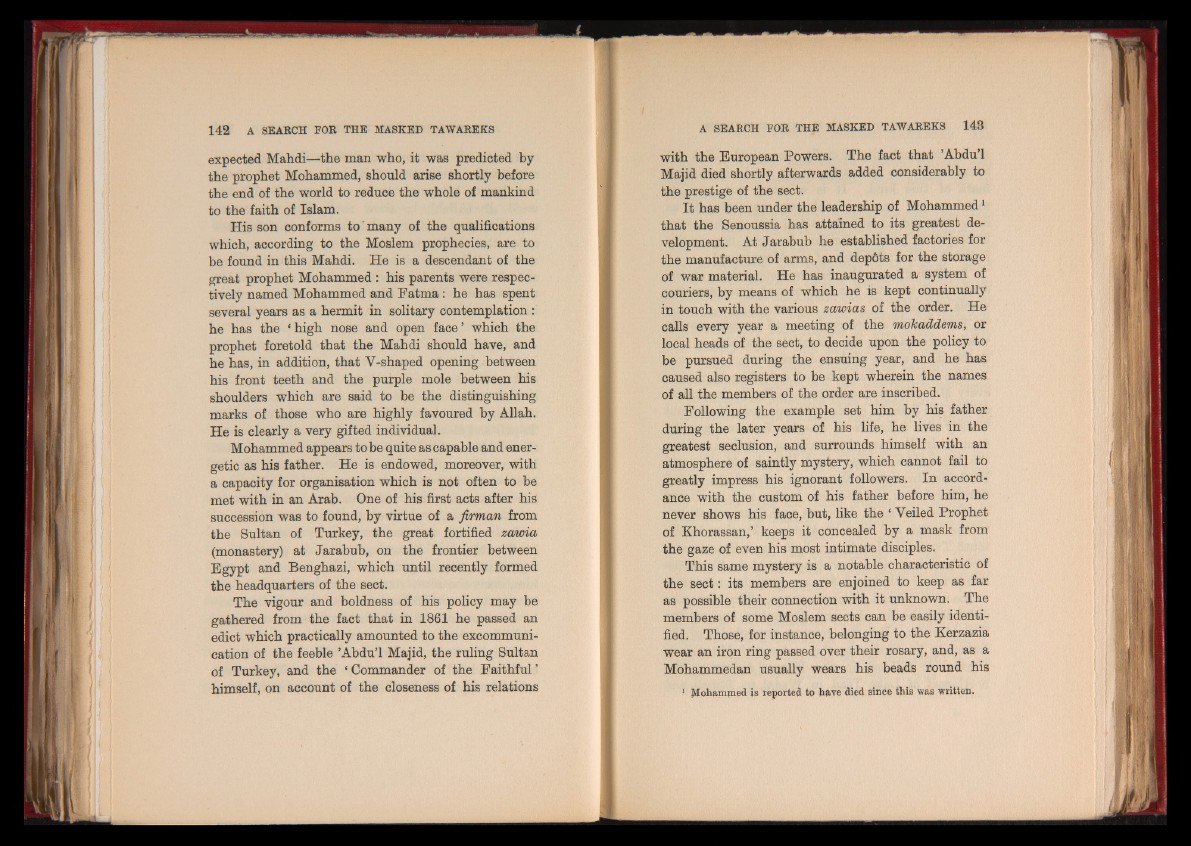
expected Mahdi—the man who, it was predicted by
the prophet Mohammed, should arise shortly before
the end of the world to reduce the whole of mankind
to the faith of Islam.
TTik son conforms to many of the qualifications
which, according to the Moslem prophecies, are to
be found in this Mahdi. He is a descendant of the
great prophet Mohammed : his parents were respectively
named Mohammed and Fatma : he has spent
several years as a hermit in solitary contemplation :
he has the * high nose and open face ’ which the
prophet foretold that the Mahdi should have, and
he has, in addition, that Y-shaped opening between
his front teeth and the purple mole between his
shoulders which are said to be the distinguishing
marks of those who are highly favoured by Allah.
He is clearly a very gifted individual.
Mohammed appears to be quite as capable and energetic
as his father. He is endowed, moreover, with
a capacity for organisation which is not often to be
met with in an Arab. One of his first acts after his
succession was to found, by virtue of a firman from
the Sultan of Turkey, the great fortified zawia
(monastery) at Jarabub, on the frontier between
Egypt and Benghazi, which until recently formed
the headquarters of the sect.
The vigour and boldness of his policy may be
gathered from the fact that in 1861 he passed an
edict which practically amounted to the excommunication
of the feeble ’Abdu’l Majid, the ruling Sultan
of Turkey, and the ‘ Commander of the Faithful ’
himself, on account of the closeness of his relations
with the European Powers. The fact that ’Abdu’l
Majid died shortly afterwards added considerably to
the prestige of the sect.
It has been under the leadership of Mohammed1
that the Senoussia has attained to its greatest development.
At Jarabub he established factories for
the manufacture of arms, and dépôts for the storage
of war material. He has inaugurated a system of
couriers, by means of which he is kept continually
in touch with the various zawias of the order. He
calls every year a meeting of the mokaddems, or
local heads of the sect, to decide upon the policy to
be pursued during the ensuing year, and he has
caused also registers to be kept wherein the names
of all the members of the order are inscribed.
Following the example set him by his father
during the later years of his life, he lives in the
greatest seclusion, and surrounds himself with an
atmosphere of saintly mystery, which cannot fail to
greatly impress his ignorant followers. In accordance
with the custom of his father before him, he
never shows his face, but, like the ‘ Veiled Prophet
of Khorassan,’ keeps it concealed by a mask from
the gaze of even his most intimate disciples.
This same mystery is a notable characteristic of
the sect : its members are enjoined to keep as far
as possible their connection with it unknown. The
members of some Moslem sects can be easily identified.
Those, for instance, belonging to the Kerzazia
wear an iron ring passed over their rosary, and, as a
Mohammedan usually wears his beads round his
* Mohammed is reported to have died since this was written.